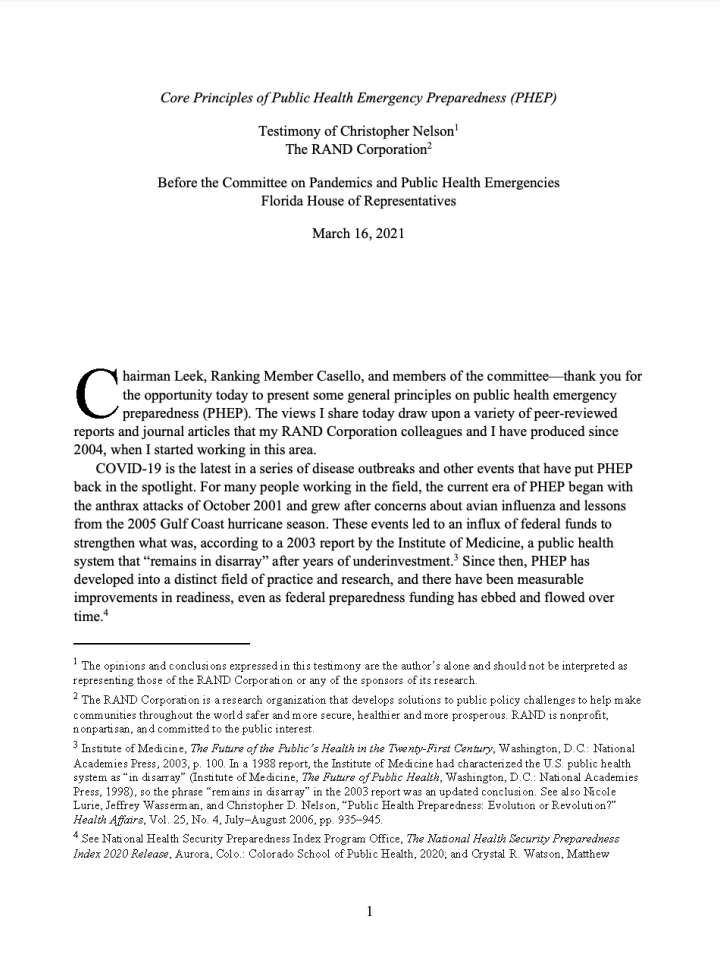Core principles of public health emergency preparedness (PHEP)
The views shared in this report draw upon a variety of peer-reviewed reports and journal articles. COVID-19 is the latest in a series of disease outbreaks and other events that have put PHEP back in the spotlight. Since then, PHEP has developed into a distinct field of practice and research, and there have been measurable improvements in readiness, even as federal preparedness funding has ebbed and flowed over time.
The paper concludes that policymakers can take several steps to support PHEP. There are several potential actions policymakers can take in supporting effective PHEP practice:
- Keep PHEP on the public agenda: There is a natural tendency for people to stop thinking about public health emergencies after the danger has passed.
- Foster collaboration across organizational silos and with communities: Policymakers can support cross-agency and cross-collaboration by asking agency heads to speak about inter-agency coordination issues during oversight processes; signaling support for boundary spanners; and supporting multi-agency working groups, joint planning processes, and strong multi-agency incident management structures.
- Foster a culture of learning: Policymakers can provide resources for realistic multi- sector, multi-agency exercises to help assess and address gaps in operational capabilities.
- Ensure adequate resources: It is important to provide stable, predictable financial support for PHEP in order to manage staff turnover, enable regular opportunities for training and exercising, and allow for the emergence of strong and connected leaders across the state.
Explore further
